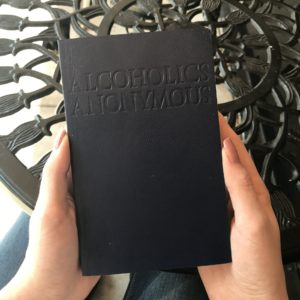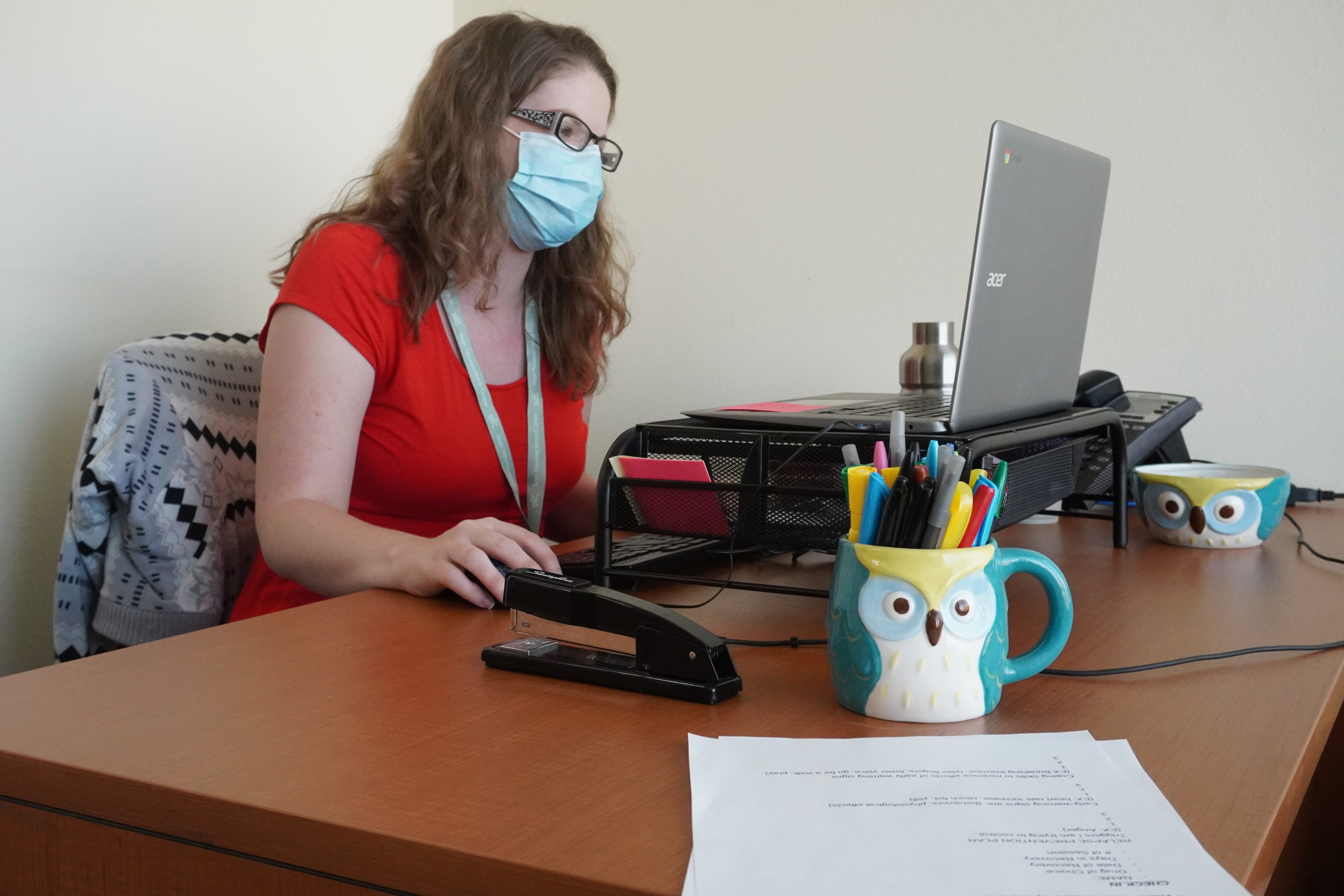You have likely been told more than once that the first step in getting help is coming to terms with the fact that you need help. means you already know the first of the 12 steps in the Alcoholics Anonymous (AA) program and probably haven’t even realized it. Unfortunately, for a person who struggles with an addiction to any substance, this can be difficult to overcome. Most people don’t want to admit that they are powerless over alcohol, but it is crucial to remember that alcoholism is not a character flaw, but a legitimate disease.
What is the Alcoholics Anonymous Program?
The program of Alcoholics Anonymous revolves around a basic concept: alcoholism is an illness that people who abuse alcohol can manage but not control. The program is community-based but practiced around the world as a means for individuals struggling with alcoholism to attain sobriety through daily meetings and peer support.
The AA program provides a place for people to come together and have valuable discussions in where they share their experiences and support each other in recovery as they maintain their sobriety.
Alcoholics Anonymous was founded in 1935 by a New York stockbroker named Bill Wilson and his doctor, Bob Smith. Within four years, the program had grown to include two additional groups, and Bill published Alcoholics Anonymous. This book was written to explain the philosophy and methods of the program and eventually came to be known as “The Big Book.”
The Big Book for Today’s Recovery

Today, we know the primary content of the Big Book as the 12 steps of recovery, although there is a great deal of information in the book that extends beyond the 12-step program. Many recovery groups have modeled similar programs after AA since its inception that help individuals recover from various dependencies. Some of these groups you may have heard of include Overeaters Anonymous, Narcotics Anonymous, and Gamblers Anonymous.
The original 12 steps of Alcoholics Anonymous contained explicitly Christian wording, which has often created an issue for people who don’t adhere to Christian beliefs. In an effort to make the group more inclusive for these individuals, some changes have been made over the years to reflect more agnostic or secular philosophies. Today, the organization includes over 115,000 groups globally.
What Are the 12 Steps?
When Bill Wilson and Dr. Bob started AA, the program exemplified universally spiritual values in the way they lived their daily lives. They found success in sobriety by surrendering themselves to a higher power and helping other alcoholics recover. The recovery process is one that requires a time commitment and a great deal of effort. Although it doesn’t happen overnight, thousands of people who suffer from alcoholism have found sobriety by adhering to the 12 steps listed here:
- We admitted we were powerless over alcohols – that our lives had become unmanageable.
- Came to believe that a Power greater than ourselves could restore us to sanity.
- Made a decision to turn our will and our lives over to the care of God as we understood him.
- Made a searching and fearless moral inventory of ourselves.
- Admitted to God, to ourselves, and to another human being the exact nature of our wrongs.
- Were entirely ready to have God remove all these defects of character.
- Humbly asked Him to remove our shortcomings.
- Made a list of persons we had harmed and became willing to make amends to them all.
- Made direct amends to such people wherever possible, except when to do so would injure them or others.
- Continued to take personal inventory, and when we were wrong, promptly admitted it.
- Sought through prayer and meditation to improve our conscious contact with God as we understood Him, praying only for knowledge of His will for us and the power to carry that out.
- Having had a spiritual awakening due to these steps, we tried to carry this message to alcoholics and practice these principles in all our affairs.
Clearly, the 12 steps as originally outlined place a heavy emphasis on religion as part of the recovery program. The group has developed a way to make the steps more inclusive for people who do not identify as religious. Some examples of the way the program is customizable to one’s personal beliefs include using their future self or their loved ones as their higher power, instead of God.
Successful AA members will tell you that the two most important steps in the program are admitting that you have a problem whose solution eludes you and sharing your struggles with your group. The psychological effect of these steps is similar in that admitting you have a problem and being open to discussing it allows you to be open to healing through suggestion and personal growth.
How Alcoholics Anonymous Works
One of your first questions, when you begin to explore recovery through Alcoholics Anonymous, is likely to be “Does the model work?” The fact that people are still working the 12 steps more than 80 years after they were written is a clear indicator that the AA model does, in fact, work. The reason that the program is so successful is that it encourages people to take an honest look at themselves, break down their egos, and reconstruct their lives methodically, one day at a time. AA is a program in which total abstinence is the key to complete recovery, stressing that people who struggle with alcohol must quit altogether because they cannot moderate their drinking. Furthermore, AA members believe that an alcoholic can never be cured and must always be “in recovery,” not unlike a patient with a terminal illness that has gone into remission.
The steps help people to make positive changes by encouraging the practices of self-discipline, forgiveness, compassion, courage, acceptance, humility, and honesty. Practicing these tenets acts as a pathway to spiritual growth, emotional well-being, and positive behavioral change, and group members will attest to the fact that it worked for them. The Alcoholics Anonymous success rate reported by people in groups around the world today is around 36% overall.
The Importance of the Big Book for Continued Recovery
The Big Book acts as a reference guide, or textbook, for the AA program. In its more than 400 pages, you will find information that is general, as well as chapters that are directed at a specific audience. In addition to the 12 steps, it includes types of actions that a person must take before embarking on the 10th step, personal stories of the recovery experiences of alcoholics, and other valuable information. For this reason, AA members rely on the Big Book throughout their recovery.
The point of the Big Book is to get people who are struggling with alcoholism to commit to a specific recovery program that is rooted in turning one’s life over to a “higher power”. Today, this refers less to the Christian God of the founders and more to a universal spiritual attitude. Group members are encouraged to read the Big Book every day and to follow its precepts. The subject matter of the book often brings about questions, even among people who have read it many times, and discussing these questions with fellow AA members is one of the keys to continued success in recovery.
As individuals go through the recovery process, they come to understand that there is no established timeline for how long it takes the 12 steps to work. Every person’s experience is unique, and every recovery is very specific to the individual. This is another reason the Big Book is a vital tool to have on hand throughout the entire recovery journey. Concepts and practices that some seem to master in a short time can take others years to grasp, but the Big Book is a constant companion to offer vital insight into the process of recovery.
Sage Recovery Cares About Our Albuquerque Community
If you are interested in learning more about alcoholism and the process of addiction recovery, feel free to reach out to the staff here at Sage Neuroscience Center. Our healthcare professionals focus on the whole person as a means to help individuals restore balance to body and mind. If you are struggling with alcohol or any other addiction, we can help. Our addiction treatment services include Outpatient Detox, Intensive Outpatient Treatment, and our Aftercare Support Group.
Our providers are here to support you on your journey to recovery.
*Editor’s Note: This article was originally published and has been updated February 28, 2021.

Therapist & SUDS IOP Facilitator
Andrea Gonzales is a Licensed Substance Abuse Associate who is currently going to school to be a Licensed Mental Health Counselor. She specializes in LGBTQI+ issues. In her free time, Andrea enjoys karaoke and crafts like crocheting. A fun fact about Andrea is she used to work as a preschool teacher and she uses the patience she learned in that position in her practice today.
Read Andrea’s Full Bio | Browse All Articles Written by Andrea Gonzales



